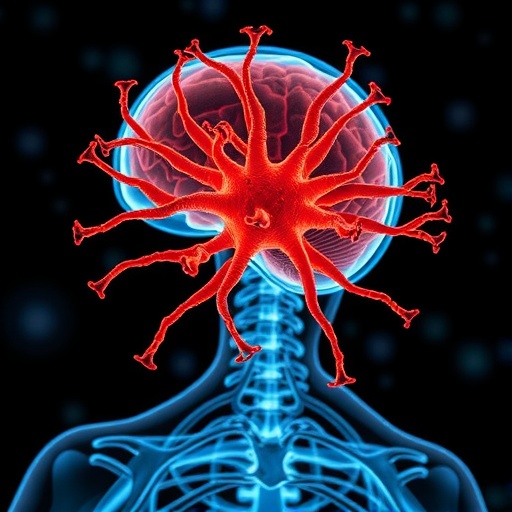In a groundbreaking study emerging from Australia, a new perspective on heart health and exercise challenges long-held myths about the finite nature of the human heart’s capacity. This research, led by Professor Andre La Gerche from the Heart, Exercise & Research Trials (HEART) Laboratory, reveals that fitter individuals actually conserve heartbeats over the course of a day, potentially extending their lifespan. Contrary to the traditional belief that exercise burns through a fixed number of heartbeats, the study uncovers that athletes experience a significantly lower resting heart rate, resulting in fewer total heartbeats per day compared to their sedentary counterparts.
This observational study meticulously measured the heart rates of athletes versus non-athletes, uncovering that athletes maintained an average heart rate of 68 beats per minute, while non-athletes averaged 76 beats per minute. When extrapolated over a 24-hour period, these figures translate to approximately 97,920 total heartbeats per day for athletes, while non-athletes register around 109,440 beats. This startling 10 percent reduction in heartbeat consumption elucidates a physiological efficiency that accompanies regular, purposeful exercise.
Central to these findings is the concept of metabolic efficiency and cardiac adaptation. Professor La Gerche explains that for the fittest individuals, resting heart rates can plummet to as low as 40 beats per minute. This remarkable bradycardia is not simply a marker of fitness but an indication of the heart’s enhanced efficiency. The myocardium in well-trained athletes adapts by optimizing stroke volume—the amount of blood pumped with each beat—thereby requiring fewer beats to maintain adequate circulation at rest. This phenomenon fundamentally shifts our understanding of cardiac workload and energy expenditure.
The implications of these findings extend well beyond athletic performance, touching upon prognostication and health outcomes. Lower resting heart rates have long been associated with improved cardiovascular health and reduced risk of morbidity. Through this research, it becomes clear that increasing physical activity positively remodels the heart, strengthening muscular function and enhancing autonomic regulation of heart rhythm. These adaptations confer resilience against various forms of heart disease and contribute to the observed links between exercise and longevity.
Professor La Gerche’s insights challenge the popularized adage, bolstered by figures such as former US President Donald Trump, that the human body has a predetermined quota of energy or “heartbeats” to expend, which exercise supposedly depletes. The data presented by the HEART Lab demonstrates that despite the transient elevations of heart rate during exercise, the sustained lower resting rate far outweighs any ‘cost’ incurred during physical exertion. This reveals a net positive balance wherein training produces more savings in the daily heartbeat budget than consumption.
Moreover, the study underscores the significance of consistent, moderate exercise rather than extreme endurance efforts. While events like the Tour de France induce temporary spikes in daily heartbeats, the cardiovascular system’s improved efficiency and durability gained through regular activity substantially mitigate any negative impact. This nuanced understanding advocates for an exercise regimen characterized by balance and sustainability, maximizing health benefits while minimizing potential strain.
Mental health benefits are also a crucial facet of this research. Exercise-induced enhancements in cardiac function are paralleled by neurochemical and neurophysiological improvements. Regular physical activity fosters the release of endorphins, promotes neural plasticity, and contributes to the regulation of mood, anxiety, and cognitive function. These interconnected benefits emphasize exercise as a holistic intervention for both physical and mental well-being, further incentivizing active lifestyles.
Importantly, the HEART Lab’s work serves as a clarion call for public health policies to promote physical activity not just as a tool for sporting excellence but as a cornerstone of preventive medicine. By translating findings from elite athletes to the broader population, researchers are framing exercise as a vital determinant of heart efficiency, and by extension, lifespan. This scalable knowledge architecture aligns with epidemiological trends demonstrating lower cardiovascular event rates in physically active cohorts.
In summary, Professor La Gerche’s research invites a paradigm shift: the heart’s capacity is not limited or depleted by exercise; rather, an active lifestyle refines the organ’s efficiency, reduces cumulative heartbeats, and extends life. The heart, it turns out, is not a simple metronome but a complex adaptive organ whose rhythmic economy improves with deliberate challenge and care. These revelations dismantle outdated narratives and pave the way for exercise as a central pillar of health optimization and disease prevention.
As the global community confronts escalating cardiovascular disease burdens, insights from the HEART Lab make a compelling case for incorporating exercise into clinical guidelines and patient care strategies. Encouragingly, the transition from sedentary to moderately active yields the most pronounced improvements, making cardiovascular enhancement accessible to a broad spectrum of individuals. This highlights the power of small, consistent behavioral changes in reshaping heart health trajectories.
The study published in the journal JACC: Advances embodies a fusion of clinical observation and physiological insight, elucidating how endurance, efficiency, and longevity intertwine. The data dispel myths and reinforce the science-backed message that every purposeful physical activity session counts towards a heart that beats not just longer but better.
Subject of Research: People
Article Title: Balancing Exercise Benefits Against Heartbeat Consumption in Elite Cyclists
Web References: http://dx.doi.org/10.1016/j.jacadv.2025.102140
Image Credits: St Vincent’s Institute of Medical Research
Keywords: Physical exercise, Heart, Cardiac function, Sports, Sports medicine
Tags: athletic heart rate benefitsAustralian heart study findingscardiac adaptation and exerciseconserving heartbeats through fitnessexercise myths and factsheart health and exerciseheartbeats per day in athletesimpact of exercise on lifespanmetabolic efficiency in athletesresearch on heart healthresting heart rate comparisonsedentary lifestyle heart risks





